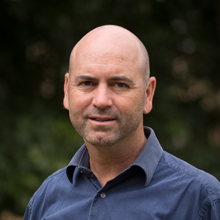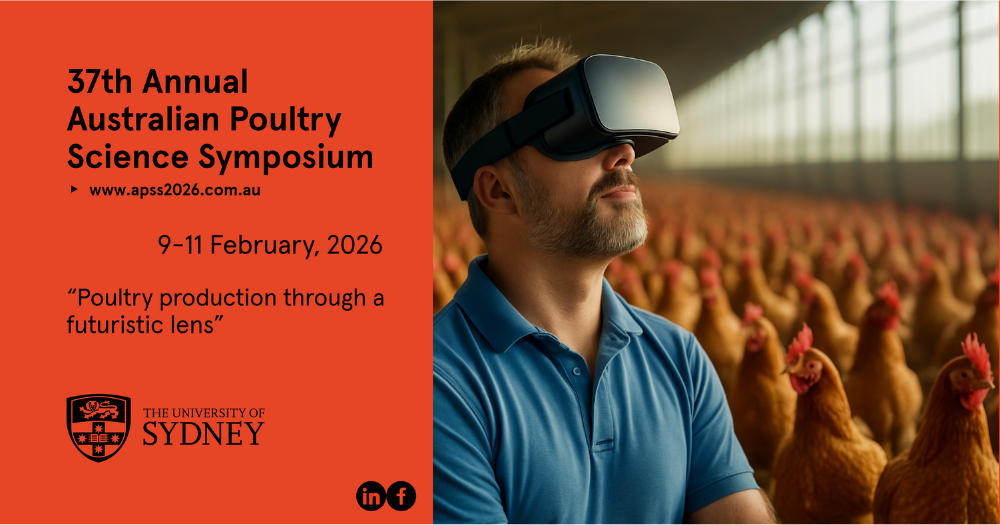Professor Eugeni Roura and the AgriFutures Chicken Meat Consortium
By Christine Clark
Poultry@Sydney had an amazing discussion with Professor Eugeni Roura this week!

Professor Roura has an interesting background. Just to list a few associations he is currently involved in:
- Director AgriFutures Chicken-Meat Consortium – Nutrition, Gut Health & Environment;
- Member National Committee for Nutrition of the Australian Academy of Sciences;
- President WPSA (Australia branch);
- Leader Nutrition and Chemo-Sensory Science (the NUT-SENSE) Group at the Queensland Alliance for Agriculture and Food Innovation (QAAFI) of the University of Queensland (UQ).
Q1: Thank you, Prof. Roura, for agreeing to have a chat with me. Can you give a little background about yourself to our readers?
I am a nutritionist by background. I started my career with a veterinary degree from the Universitat Autonoma de Barcelona (UAB). Soon my preferences were focused away from more classic clinical aspects of veterinary medicine to more on digestive physiology and nutrition. I was awarded a Fullbright scholarship to pursue a PhD at the University of California Davis, in collaboration with the UAB. And now Australia! Why Australia?- it was a family decision to move Down Under. We found that Australia was offering a good quality of life in an English-speaking country, great weather together with some of the top Universities in the world in the field of agriculture. In addition, part of choosing UQ was the great Higher Degree by Research (HDR) program of the university. Mentoring students is one of my main professional passions. My professional career has not been a straight line. Firstly, after my post-doc at UCDavis, life took me to a career path in industry which lasted 16 years. Then back to academia in 2010 when I joined UQ’s Centre for Nutrition and Food Sciences where I have had a chance to develop a research group active in poultry and pig nutrition. I am also involved in human nutrition on food allergy research.
The researcher I have become today reflects the university training and mentorship at the Vet School (UAB) and post-graduate degree at UCDavis. In short, both training periods took me to understand and build my interest in animal (digestive) physiology more than other aspects of livestock production systems. The other big component of my professional DNA as a researcher comes from working in industry, R&D in particular, which exposed me to a vast network in global and very competitive markets. It also had me in management positions with varied responsibilities. This industry background has great value in my academic career since most agriculture-related fields often have industry collaborations as the main driver of our research programs.
Q2: I know you are leading the AgriFutures’ Consortium on broiler nutrition and health but not everyone knows about its details. Can you please explain to our audience what its main objectives are and how people can get information about it?
This is a large project funded by AgriFutures Australia together with university and industry partners. The Consortium is led by UQ’s Queensland Alliance for Agriculture and Food Innovation (QAAFI) and represents a global collaboration including twelve Australian and international universities, the Queensland Department of Agriculture and Fisheries (QDAF), and seven industry partners.
While this is a nutrition driven project, some of the key words in the agenda of the Consortium are gut health, sustainability and the environment. A high priority objective is to help producers improve profitability, and reduce the dependence on soybean meal, which, in turn, improves the sustainability at a global scale. One of the Consortium’s overarching aims is to improve nutrition with a priority set on gut health. This, in turn, has implications on improving productivity and animal welfare.
For more information, your readers can contact Drs Stanley Chen (Project Manager, ) and Rachele Osmond (Communication and Extension Manager, ).and follow us on LinkedIn and visit the AgriFutures webpage.
Q3: What are some of the key topics the Consortium is working on and what are the main outcomes to date?
The Chicken Nutrition, Gut Health and Environment research Consortium has been organised in 6 research programs that include trans-generation nutrition programs, including broiler breeders and “in ovo” strategies (Program 1), carbohydrate and amino acid digestive precision (Program 2), innovative feed formulations to decrease soybean use (Program 3), the improvement of gut microbiome through nutrition (Program 4), novel approaches to improve the shed environment (Program 5) and an integrative approach of all the outcomes to facilitate industry adoption (Program 6). One essential aspect of the nutrition programs relies on improving broiler breeder practices that improve embryonic development and the resilience of the progeny to dietary constraints such as low crude protein diets. Ultimately, in the nutrition side of research, a crucial objective is to decrease the dependence on soybean, which, in turn, improves the sustainability of the production system.
Q4: What are the main channels through which you plan to disseminate the Consortium outcomes to industry?
The goal of the consortium is to develop an ambitious communication program that reaches a wide audience. These not only include publishing scientific and technical papers (including specialised press), but also contributing to scientific conferences, extension seminars and webinars and other potential activities such as collaborations with the WPSA state sub-branches events. Quick ways to find updates are via LinkedIn and the AgriFutures webpage as a main point.
For example, the communication and extension team of the Consortium organised a webinar on the 6 December 2023 introducing the project, and provided an update on the trial work that has started and how this work fits into the overarching research goals of the greater project. The webinar is available online (link).
In addition, the Consortium counts on a Steering Committee with representatives from the main chicken meat producers, vets and nutritionists. Sitting committee members are responsible for reviewing project designs, feed formulations and other practical research aspects to warrant the alignment of the research programs with industry priorities.
Moreover, the Consortium has planned a robust industry placement program (IPP) for our cohort of PhD students -12 across 6 different programs. The IPP is targeting the exchange of knowledge and information through the students with all main stakeholders interested. These placements are one of the cornerstones of the Consortium-Industry interactions. The feedback from industry is excellent, with the potential of the program to become one of the highlights of the Consortium.
Finally, on communication, one of the milestones of the Consortium is to have yearly industry forums over the next three years. This will assist the Consortium to share the deliverables to industry. Forums will be held before APSS 2025, 2026 2027 as open industry forums.

In summary, Professor Roura is passionate about his role in the Consortium and its collaboration with industry. He sees a future for students and researchers to work together with industry. All this while attracting people to work in and help the poultry industry grow. Under his leadership, the Consortium aims to address key challenges and opportunities in the poultry industry. The consortium has and will continue bringing together industry experts, researchers including the international community, and stakeholders to discuss and collaborate on various topics related to poultry farming.
Some of the key areas of focus of the Consortium includes:
- Developing nutrition programs that help reduce dependence of imported soybean. These programs include trans-generation strategies seeking to capitalise on maternal conditioning synergies between broiler breeders and their progeny through nutrition.
- Sustainable Poultry Production: exploring innovative and sustainable practices in poultry production, such as improving animal welfare through fostering gut health, reducing environmental impact, and enhancing the overall efficiency of production systems.
- Technology and Innovation: improving poultry production and management. Discussions on the use of automation, data analytics, and precision farming techniques to enhance productivity and efficiency.
- Industry Collaboration and Knowledge Sharing: a platform for industry stakeholders to collaborate, share knowledge, and exchange best practices. This collective effort aims to drive positive changes and advancements in the poultry industry.
- Training and mentorship of the next generation of poultry researchers/technical staff for the industry. A priority emphasis has been planned through IPP.
- An ambitious communication and extension program of Consortium outcomes to inform and engage the wider community.
- Fostering international and Australian poultry science networks.
Overall, the AgriFutures Chicken Meat Consortium plays a crucial role in fostering collaboration, innovation, and knowledge sharing within the poultry industry. It aims to address the current challenges and explore opportunities for sustainable growth and development in the sector.
Latest news
Our events
- The Countdown is on for APSS 2026With just over 120 days until APSS 2026, planning for the 37th annual Australian Poultry Science Symposium is progressing smoothly. Next year’s event will return to the University of Sydney Business School – Belinda Hutchinson Building (H70) on the Camperdown Campus, and we’re excited to once again welcome delegates for 2.5 days of presentations, posters, networking, and industry engagement.
Connect with us:


